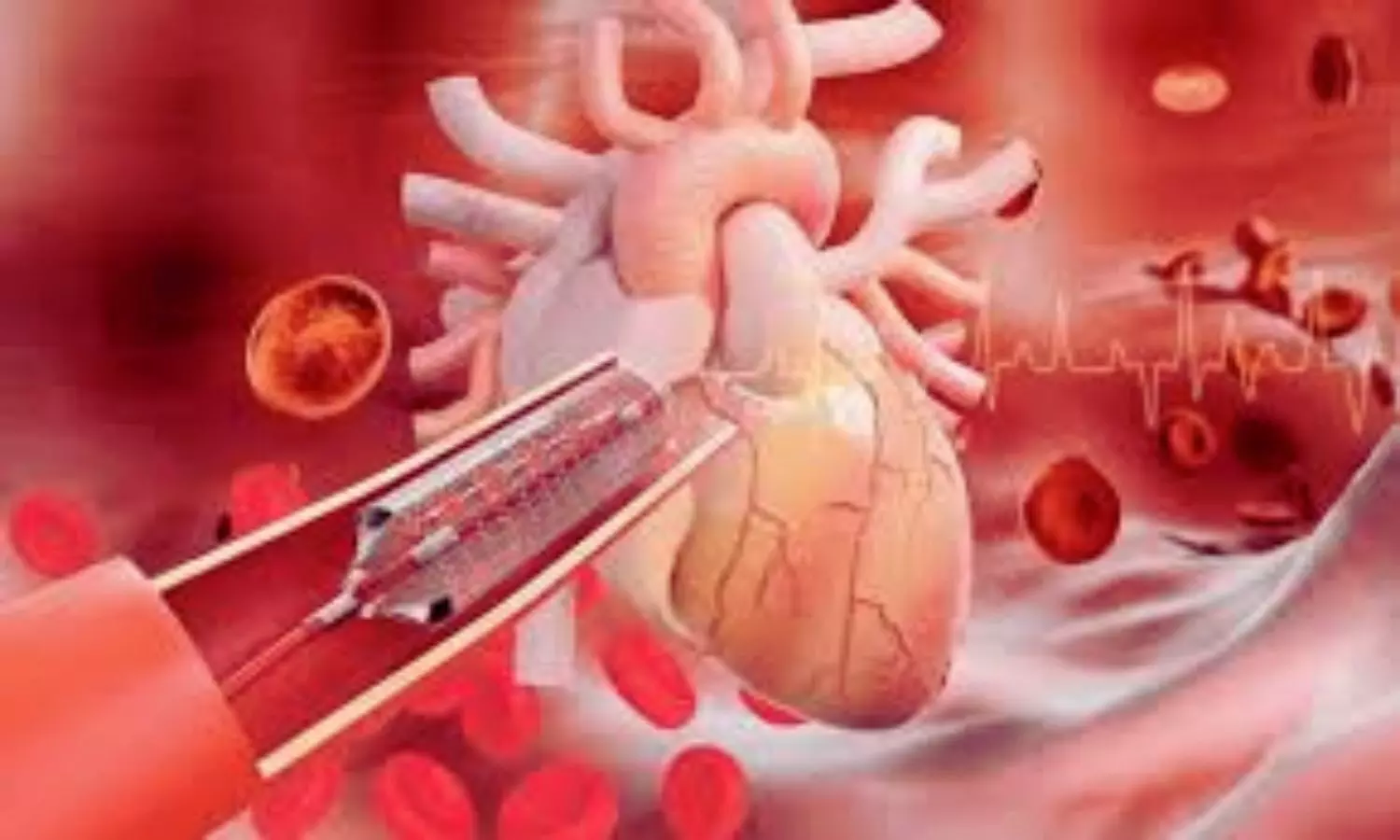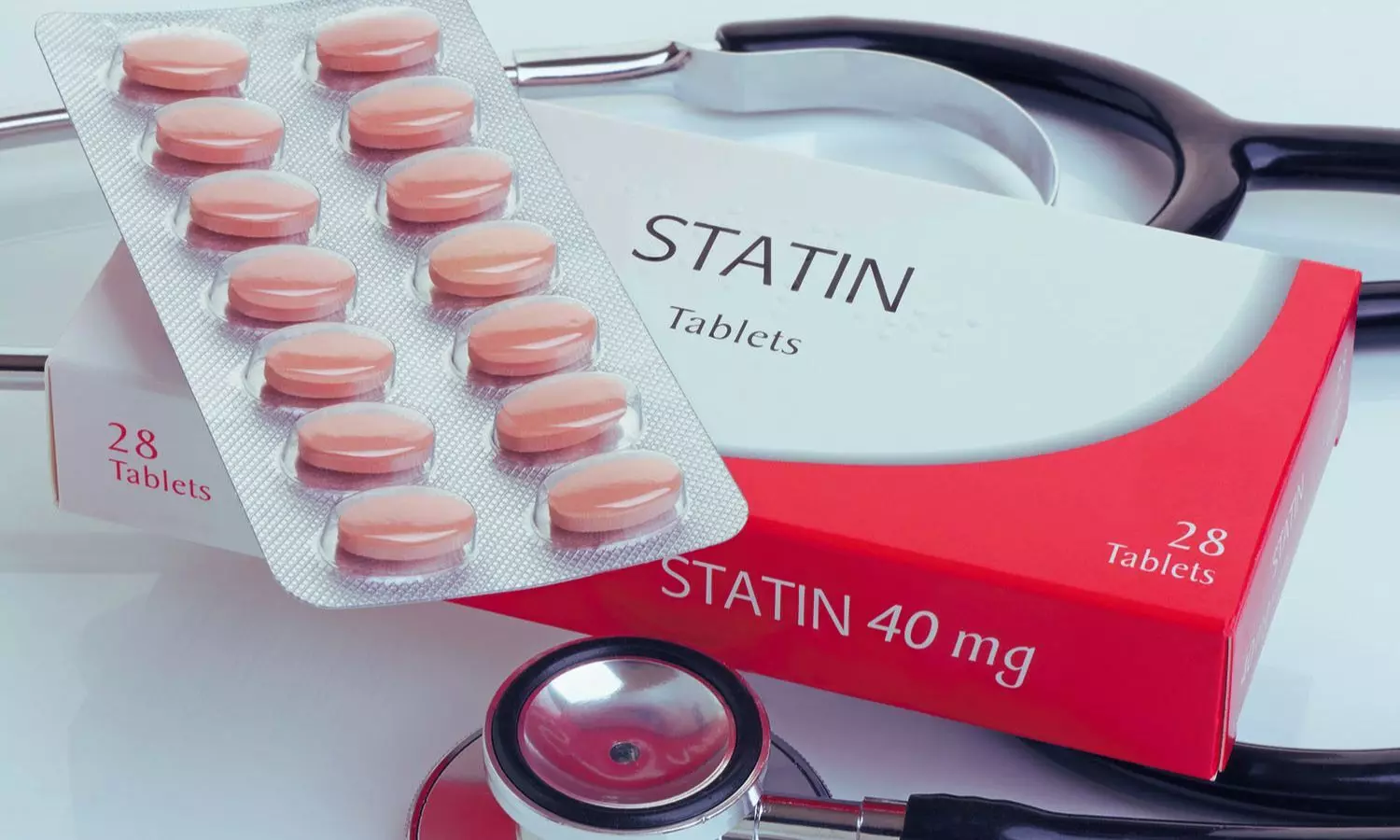Screening with a PSA test has a small impact on prostate cancer deaths but leads to overdiagnosis, finds study
Powered by WPeMatico
Powered by WPeMatico
Powered by WPeMatico
Powered by WPeMatico
Powered by WPeMatico
Powered by WPeMatico

Gurugram: A 30-year-old man suffering from multiple traumatic experiences till he attained 16 years of age due to domestic abuse was successfully treated by the doctors at the Marengo Asia Hospitals Gurugram through a key hole surgery.
The comprehensive approach taken by Marengo Asia Hospitals Gurugram, led by Dr Himanshu Champaneri, highlights the importance of a multidisciplinary team in addressing such cases.
He developed symptoms of post-traumatic stress disorder from the time he turned 17 years of age. *Dr Himanshu Champaneri, Sr Consultant, Neurosurgery, Marengo Asia Hospitals Gurugram treated the patient.
The patient was diagnosed with Refractory PTSD with Dyscognitive epilepsy. Refractory PTSD with dyscognitive epilepsy refers to a complex medical condition where an individual experiences both post-traumatic stress disorder (PTSD) and dyscognitive epilepsy that does not respond well to conventional treatments.
The disorder manifests itself in the form of memory intrusions, inability to focus, avoiding situations and contacts that will remind him of his traumatic experiences, isolation, and difficulty in establishing and maintaining relations.
The patient’s immediate relief and improved quality of life following surgery highlight the effectiveness of the intervention. His ability to engage in daily activities and envision a future free from the burden of his conditions speaks volumes about the impact of appropriate treatment.
The patient had sought medical therapies before coming to India which helped him for a certain time, when the symptoms recurred. But this affected his daily life, education, and ability to learn/concentrate. He even attempted suicide two times and was treated with medical therapy, psychotherapy, and EMDR (eye movement desensitization and reprocessing), but his symptoms continued.
He developed dyscognitive epilepsy in which he would have sudden episodes of blankness when he would lose the ability to respond to his surroundings, questions, or any dangers. Such episodes would occur anytime when he was traveling, standing at the subway station, in class, or even alone and affected his daily life as he was unable to pursue any growth in his education/profession.
When he sought treatment at Marengo Asia Hospitals Gurugram, he was evaluated by a team of psychiatrists, functional neurosurgeons, and Neurologists. When asked to revisit his traumatic memories, the functional MRI showed active signals in the right amygdala, which is expected in cases of severe refractory post-traumatic stress disorder. The non-dominant side was confirmed as right side. The rationale for intervention was to intervene at the non-dominant amygdala, which is a center for memory and fear. In cases of refractory PTSD, the non-dominant amygdala becomes hyperactive, leading to memory intrusions and giving rise to dyscognitive seizures.
The keyhole surgery was performed using stereotactic radiofrequency ablation. This procedure is performed by identifying the hyperactive target, the right amygdala in this case. The surgery is performed while the patient is awake to ensure that we have reached the right target and that there are no neurological side effects.
During the surgery, when the amygdala was stimulated and ablated, the patient felt sudden relief of tension, he felt happy memories and relaxation of muscles which he had not experienced for many years. This confirmed the success of the surgery and ablation of the right area. A post-operative MRI scan additionally confirmed this.
According to an IANS report, After the surgery, the patient remained in a very relaxed and happy state and was able to focus on tasks that had not been possible before. He was able to read books, focus on videos, and think about his future with such clarity, which he had not experienced for many years. He did not have any episodes of dyscognitive seizures after the surgery and he had complete relief from the post-traumatic stress disorder.
Dr Himanshu Champaneri, Senior Consultant Neurosurgeon, at Marengo Asia Hospital Gurugram, said,, “When someone has both refractory PTSD and dyscognitive epilepsy, it can pose significant challenges in diagnosis and treatment. The presence of one condition can exacerbate the symptoms of the other, leading to a complex clinical picture. Managing this condition typically involves a multidisciplinary approach, including mental health professionals, neurologists, and possibly other specialists, to address both the psychiatric and neurological aspects of the disorder. Treatment may involve a combination of medication, psychotherapy, and possibly other interventions such as neuromodulation or lifestyle modifications.”
Neeta Rajwar, Facility Director, Marengo Asia Hospitals Gurugram says, “Our clinicians constantly endeavor to break the ceiling to go beyond borders to treat patients who come to us. Within the comprehensive realm of health and wellness, prioritizing mental health is equally vital to physical well-being. These facets are intertwined, each influencing the other’s welfare. While research findings may differ, data from India indicates that approximately 20% of adults grapple with various mental health challenges. Globally, mental health is swiftly becoming a growing area of concern. Unchecked mental disorders can lead to disastrous diseases such as epilepsy”, reports IANS.
WHO studies estimated that the burden of mental health problems in India is 2443 disability-adjusted life years (DALYs) per 100 000 population; the age-adjusted suicide rate per 100 000 population is 21.1. close to 60 to 70 million people in India suffer from common to severe mental disorders. A study has shown that children who have experienced child abuse or neglect are four times more likely to develop serious mental illness. And yet, there are many reasons why people do not seek treatment for mental illness, including stigma, lack of awareness still very low even among the literate, and lack of access to resources.
Powered by WPeMatico

Korea: A subgroup analysis of the RENOVATE-COMPLEX-PCI trial including 1639 patients showed no significant interaction between treatment strategy and sex in patients undergoing complex PCI with the treatment benefit of intravascular imaging–guided PCI.
“In the analysis, intravascular imaging guidance was associated with reducing the risk of target vessel failure in both women and men,” the researchers reported in JAMA Cardiology. “There was no significant interaction between treatment strategy with intravascular imaging-guided percutaneous coronary intervention (PCI) and sex.”
Previous studies revealed that women often had worse clinical outcomes after PCI than men. Potential causes for this discrepancy were suggested to be older age, atypical presentation, and a higher number of underlying risk factors in women. Recent studies also found that women tend to experience a higher incidence of adverse outcomes after PCI of complex coronary artery lesions, however, these differences were minimized after adjusting for underlying risk factors.
There have been heterogeneous results related to sex differences in prognosis after PCI for complex coronary artery lesions. Therefore, Ji Hyun Cha, Sungkyunkwan University School of Medicine, Seoul, Korea, and colleagues aimed to evaluate potential differences in outcomes with intravascular imaging–guided PCI of complex coronary artery lesions between men and women.
For this purpose, the researchers conducted a prespecified substudy to evaluate the interaction of sex in the RENOVATE-COMPLEX-PCI randomized clinical trial. The trial, conducted at 20 sites in Korea, evaluated patients with complex coronary artery lesions treated by PCI. It showed superior clinical outcomes following intravascular imaging–guided PCI versus angiography-guided PCI.
Patients with complex coronary artery lesions undergoing PCI were enrolled between 2018 and 2021, and the median follow-up period was 2.1 years.
Following diagnostic coronary angiography, eligible patients were randomly assigned in a ratio of 2:1 to receive intravascular imaging–guided PCI or angiography-guided PCI. The timing and choice of the intravascular imaging device were left to the operators’ discretion. Of 1639 included patients, 20.7% were women, and the mean age was 65.6 years.
The study’s primary endpoint was target vessel failure, defined as a composite of target vessel-related myocardial infarction, cardiac death, or clinically driven target vessel revascularization. Secondary endpoints were individual components of the primary endpoint.
Based on the analysis, the researchers reported the following findings:
In conclusion, intravascular imaging versus angiographic guidance was associated with a similar reduction in the risk of target vessel failure among women and men among patients undergoing complex PCI. The treatment benefit of imaging-guided PCI showed no significant interaction between sex and treatment strategy.
Reference:
Cha JH, Lee JM, Choi KH, et al. Intravascular Imaging–Guided Optimization of Complex Percutaneous Coronary Intervention by Sex: A Subgroup Analysis of the RENOVATE-COMPLEX-PCI Trial. JAMA Cardiol. Published online April 03, 2024. doi:10.1001/jamacardio.2024.0291
Powered by WPeMatico

Rahway: Merck, known as MSD outside of the United States and Canada, has announced it has initiated a Phase 3 clinical trial evaluating MK-1084, an investigational oral selective KRAS G12C inhibitor, in combination with KEYTRUDA for the first-line treatment of certain patients with metastatic non-small cell lung cancer (NSCLC) whose tumors harbor KRAS G12C mutations and express PD-L1 (tumor proportion score [TPS] ≥50%).
“KRAS is among the most prevalent mutations in cancer and KRAS G12C is the most common KRAS mutation in patients with non-small cell lung cancer,” said Dr. Marjorie Green, senior vice president and head of oncology, global clinical development, Merck Research Laboratories. “Based on early evidence showing MK-1084 in combination with KEYTRUDA had a manageable safety profile and promising anti-tumor activity, we are now proceeding to a larger Phase 3 trial to evaluate this combination in certain patients with metastatic non-small cell lung cancer.”
Merck has initiated a Phase 3, randomized, double-blind, multicenter clinical trial (NCT06345729) evaluating once daily MK-1084 in combination with KEYTRUDA administered once every three weeks compared with KEYTRUDA plus placebo in previously untreated patients with KRAS G12C-mutated metastatic NSCLC with a PD-L1 TPS ≥50%. The trial will enroll approximately 600 patients globally. The primary endpoints of the study are progression-free survival and overall survival, and key secondary endpoints include objective response rate and duration of response.
MK-1084 is currently being evaluated in a Phase 1, open-label multicenter clinical trial (NCT05067283) to assess safety, tolerability, pharmacokinetics and efficacy of MK-1084 as monotherapy and as part of various combination therapies in patients with KRAS G12C mutant advanced solid tumors. Preliminary safety and efficacy data from this trial were previously presented at the European Society for Medical Oncology (ESMO) Congress in 2023.
MK-1084 is being developed through a collaboration with Taiho Pharmaceutical Co. Ltd and Astex Pharmaceuticals (UK), a wholly owned subsidiary of Otsuka Pharmaceutical Co., Ltd. This collaboration was announced in January 2020.
MK-1084 is an investigational, potent and specific KRAS G12C covalent inhibitor. Mutations in KRAS are among the most prevalent mutations found in cancer, occurring with high frequency in non-small cell lung cancer, pancreatic, urogenital and colorectal cancers. The KRAS G12C mutation is the most frequently observed KRAS mutation in patients, occurring in approximately 14% of non-small cell lung cancers (adenocarcinoma). Despite decades of research and recognition of the therapeutic importance of targeting KRAS, the development of small molecule inhibitors targeting KRAS mutations has been challenging.
Lung cancer is the leading cause of cancer death worldwide. In 2022 alone, there were approximately 2.4 million new cases and 1.8 million deaths from lung cancer globally. Non-small cell lung cancer is the most common type of lung cancer, accounting for about 80% of all cases. In 2024, the overall five-year survival rate for patients diagnosed with lung cancer is 25% in the United States. Improved survival rates are due, in part, to earlier detection and screening, reduction in smoking, advances in diagnostic and surgical procedures, as well as the introduction of new therapies. Early detection and screening remain an important unmet need, as 44% of lung cancer cases are not found until they are advanced.
Read also: European Commission approves Merck Keytruda plus Chemotherapy for lung cancer
Powered by WPeMatico

USA: A meta-analysis of individual participant data has shed light on the effects of statin therapy on diagnoses of new-onset diabetes and worsening glycemia in large-scale randomized blinded statin trials.
The study findings, The Lancet Diabetes & Endocrinology, reaffirm a dose-dependent association between statin therapy, which may be relevant for guidelines and shared decision-making. However, these glycaemic effects do not outweigh the statin therapy benefit among individuals for whom they are recommended.
“Statins cause a moderate dose-dependent increase in new diabetes diagnoses that are consistent with a small upward shift in glycemic, with the majority of new diagnoses of diabetes occurring in people with baseline glycaemic markers that are close to the diagnostic threshold for diabetes,” the researchers wrote.
“Importantly, however, any theoretical adverse effects of statins on the cardiovascular (CV) risk that might arise from these small increases in glycemia are already accounted for in the overall reduction in CV risk seen with statin therapy in these trials.”
Previous meta-analyses of summary data from randomized controlled trials (RCTs) have revealed that stating therapy raises the risk of diabetes, however, not much is known about the timing or size of this effect, or who is at greatest risk. To fill this knowledge gap, Christina Reith and colleagues from Cholesterol Treatment Trialists’ (CTT) Collaboration, analyzed individual participant data from large, long-term, randomized, double-blind trials of statin therapy.
For this purpose, the researchers conducted a meta-analysis of individual participant data from RCTs of statin therapy that participated in the CTT Collaboration. The meta-analysis included double-blind RCTs of statin therapy of at least 2 years’ scheduled duration and with at least 1000 participants. All recorded diabetes-related adverse events, measures of glycemia, and treatments were sought from eligible trials.
Meta-analyses assessed the effects of allocation to statins on new-onset diabetes and on worsening glycemia in people with diabetes. New-onset diabetes was defined as the use of new glucose-lowering medications, diabetes-related adverse events, glucose concentrations, or HbA1c values.
Of the trials participating in the CTT Collaboration, 19 trials compared statin versus placebo (123 940 participants, 21% with diabetes; median follow-up of 4·3 years), and four trials compared more versus less intensive statin therapy (30 724 participants, 17% with diabetes, median follow-up of 4·9 years).
The study led to the following findings:
In conclusion, among individuals without diabetes, statin therapy produces a dose-dependent rise in the rate of diabetes diagnosis by inducing a small increase in glycemia. People are most at risk of exceeding the diagnostic threshold for diabetes due to statins if their glycaemic control is close to the threshold before treatment.
“The diabetes-related risks arising from the small changes in glycemia resulting from statin therapy greatly outweighed the benefits of statins on major vascular events when the direct clinical consequences of these outcomes are taken into consideration,” the researchers wrote.
Reference:
Cholesterol Treatment Trialists’ (CTT) Collaboration. Electronic address: ctt@ndph.ox.ac.uk; Cholesterol Treatment Trialists’ (CTT) Collaboration. Effects of statin therapy on diagnoses of new-onset diabetes and worsening glycaemia in large-scale randomised blinded statin trials: an individual participant data meta-analysis. Lancet Diabetes Endocrinol. 2024 Mar 26:S2213-8587(24)00040-8. doi: 10.1016/S2213-8587(24)00040-8. Epub ahead of print. PMID: 38554713.
Powered by WPeMatico

Lucknow: The trauma centre at King George’s Medical University (KGMU) is set for a significant upgrade with the introduction of a pneumatic tube conveyor network system.
This innovative system is designed to revolutionize the transportation of blood samples and other specimens between wards and the laboratory, promising to drastically reduce time and effort.
Vice-chancellor Soniya Nityanand has announced the commencement of the project, which has been allocated a budget of Rs 80 lakhs. The primary goal is to enhance sample delivery efficiency and expedite the diagnostic process at KGMU. The pneumatic tube system will propel sample capsules through a network of tubes using pressurized air, eliminating the need for manual transportation.
Also Read:KGMU to kickstart its kidney transplant programme, once again
According to an IANS report, “Attendants of patients or lab attendants in the wards take blood samples of admitted patients to the labs. They will no longer need to run from ward to lab to submit the samples,” said Nityanand.
She said, “The pneumatic tube system will use pressurised air to propel sample capsules through a network of tubes, significantly reducing transportation time and effort. It will also save manpower required for collecting samples from the ward.”
This will be a welcome relief for the trauma centre, which caters to a high volume of patients (around 300-400 daily) and keeps the labs busy round-the-clock.
“With multiple tests required for each patient, attendants often face long wait times while navigating between departments. The new system will free them up to focus on patient care,” she added.
Additionally, KGMU is introducing an online payment system to further improve patient experience. Patients can deposit an estimated amount against their central registration number, with fees for diagnostic tests automatically deducted.
This initiative aims to streamline the billing process and shorten waiting times at payment counters.
“Both patients and attendants will benefit tremendously from saved time and energy,” said Chief Medical Superintendent Sandeep Tiwari. The project is expected to be completed within 3-4 months after the tender process.
Powered by WPeMatico
